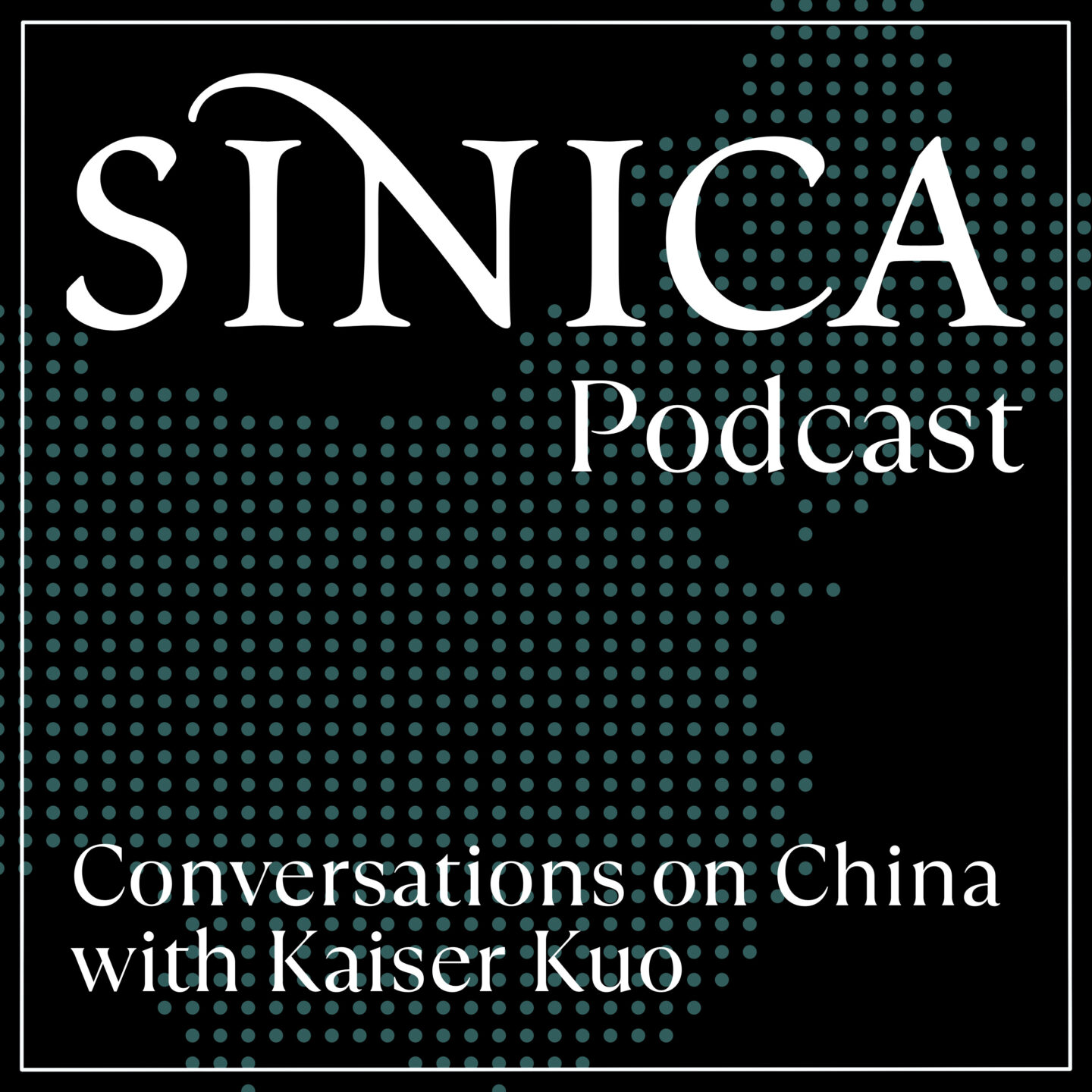By Evan Feigenbaum and Michael Nelson
The pandemic, structural changes, and geopolitical competition have all led to an acute supply chain crisis. Taiwan stands to benefit, but it needs policy changes and technology investments first.
FUTURE OF TAIWAN’S ECONOMIC COMPETITIVENESS
In 2019, the Asia Program of the Carnegie Endowment for International Peace, in collaboration with the Taiwan WTO & RTA Center of the Chung-Hua Institution for Economic Research (CIER), began to jointly convene a series of roundtables with U.S. and Taiwan stakeholders.
The initiative has two major goals: first, to examine challenges to Taiwan’s future competitiveness and comparative advantage amid technological change, global economic disruption, and rapidly evolving political risk; and second, to explore where and how fresh partnerships between U.S. and Taiwan players can help to bolster Taiwan’s economic future.
The initiative is focused in several areas:
- assuring Taiwan’s technological advantage amid significant challenges to its innovation ecosystem;
- disruptive energy futures as Taiwan grapples with the trilemma of security, affordability, and sustainability;
- improving Taiwan’s investment climate to attract not just more but also highest-quality foreign investment; and
- potential supply chain opportunities for Taiwan as technological, economic, and geopolitical changes lead governments and multinational firms to rethink vulnerabilities, resilience, and options in emerging industries.
This paper on Taiwan’s supply chain opportunities in two evolving industries—life sciences and safer software—is the third in a series. It draws, in part, on the insights of more than two dozen expert participants in two virtual transpacific workshops convened in 2021 by Carnegie and CIER. The authors of this study, Evan A. Feigenbaum and Michael R. Nelson, have drawn on perspectives from those contributors, as well as other leading policy and industry analysts on both sides of the Pacific. We are particularly grateful to our co-convenor, Roy C. Lee of CIER, for helping to pull together these workshops and for facilitating intensive conversations.
We particularly acknowledge the input, comments, and critiques received from Joy Chan, Scott Charney, Eugene Chiu, Cynthia Chyn, Leslie Daigle, Dan Hanfling, Katie Moussoris, Kevin O’Connell, Gregory Shannon, Mary Shaw, Megan Stifel, and several industry and policy executives in both Taiwan and the United States.
A very special thank you to Jacob Feldgoise, Hana Anderson, and Alex Taylor of the Carnegie Endowment for International Peace—for comments on the paper, invaluable background research, and essential support of the project.
EXECUTIVE SUMMARY
To some, the acute supply chain crisis that has followed in the wake of the coronavirus pandemic is a sign of poor planning, lack of resilience and surge capacity, and industry rigidity. Inflation is also having a major impact and will inevitably lead to some supply chain reconfiguration. But structural shifts matter too, including rising costs in mainland China—the world’s manufacturing’s powerhouse—and the overconcentration of freight in just ten companies that control 85 percent of global container capacity.
Globalization has bequeathed a system that seemed efficient until it was tested by the multidimensional crises of the last two years. In industry after industry, C-suites are planning for a world of disruption. At a minimum, companies aim to build resilience and redundancy into their supply chains.
But there is another factor—political risk—that is complicating planning, especially in technology-intensive industries. Specifically, the emergence of multidimensional strategic competition between Beijing and Washington has interrupted the flow of goods, capital, people, technology, and data. And these geopolitical disruptions look set to become a long-term structural trend.
This is a sea change that will invariably bleed into many industries and rejigger supply chains. But amid the disruption, some economies will have fresh opportunities to attract investment, build out new industries, and diversify their growth drivers. Taiwan is one such economy that may stand to benefit from the supply chain rethink. This paper explores some ways that it could do so.
Two prior Carnegie Endowment studies of Taiwan’s economic competitiveness included specific recommendations that could comprise the foundation of an ecosystem that serves the public interest by bolstering Taiwan’s profile and role in more and more global supply chains. Most notably, these were Carnegie’s recommendations to position Taiwan’s economy as a trusted hub, trusted vendor, trusted tester, and trusted conduit for technology-intensive R&D and production.
Taiwan’s public interest would benefit if such opportunities became a counterpoint to mainland China’s scale advantages. But Taiwan faces intense competition from other economies in Asia and Europe that also seek to capitalize on supply chain shifts, reaping the harvest from their investments while carving out specialized niches amid rising suspicion of mainland China-origin technology products and services.
This study aims to help to refine competitive choices for Taiwan while highlighting unique comparative advantages that would make it an especially attractive place for new global investments. The paper digs deeply into two opportunities for Taiwan.
The first involves dynamic changes in one of the high-tech industries that Taipei has made into a strategic priority—the life sciences, including biotechnology and precision medicine. Despite twenty years of concerted effort and some signal successes, especially with drug development and diagnostics, Taiwan has not captured a role or market share analogous to its multidecade build-out in semiconductors.
For Taiwan, trust will be the crucial variable and competitive advantage. Taiwan could, for example, leverage its advantages with high-quality medical data to become a locus for clinical trials, while also leveraging other advantages for global supply chains in the drug discovery, advanced diagnostics, and personalized medicine markets.
But to do so, it will need to make policy and regulatory changes and make some new strategic investments.
The second chapter turns to whether Taiwan’s economy could be positioned as a leader in testing, validating, and deploying software, which would give Taiwan-based firms a larger role in the information technology services business where mainland China, India, and others have a larger profile. Elements of Taiwan’s ecosystem could potentially be positioned to use software engineering to ensure that business software and services produced by local companies and their international partners are more tested and more trusted than competing products on the market.
Both chapters emphasize that international partnerships, particularly with U.S. players, could naturally complement a revitalized and broadened innovation strategy for Taiwan. The paper:
- explores pressing obstacles that presently stand in the way of Taiwan’s supply chain opportunities in these two key sectors;
- proposes specific ideas to government, industry, and capital markets players to help alleviate and overcome some of these obstacles; and
- recommends forward-looking partnerships between Taiwan and especially U.S. players to facilitate these ideas.
INTRODUCTION
Supply chain bottlenecks have become a headline story in 2021, as shipping containers pile up on docks from China to California and as logistics managers strain to fill orders.
To some observers, the acute supply chain crisis that has followed in the wake of the coronavirus pandemic is a sign of poor planning, lack of resilience and surge capacity, and industry rigidity.1 Inflation, too, is having a major impact and will inevitably lead to some supply chain reconfiguration. Higher interest rates mean that the costs of higher inventory levels become material very quickly, pressuring companies to go back to older, leaner models.
But structural shifts matter too, including rising costs in mainland China2—the world’s manufacturing powerhouse—and the overconcentration of freight in just ten companies that control 85 percent of global container capacity.3
Globalization has bequeathed a system that seemed efficient until it was tested by the multidimensional crises of the last two years. Corporate and market thinking is unlikely to remain the same. In industry after industry, C-suites are planning for a world of disruption. At a minimum, companies aim to build resilience and redundancy into their supply chains.
But there is another factor—political risk—that is complicating planning, especially in technology-intensive industries. That risk has put a brake on easy, straightforward solutions, like building extra capacity in China. Specifically, the emergence of multidimensional strategic competition between Beijing and Washington has interrupted the flow of goods, capital, people, technology, and data. And these geopolitical disruptions look set to become a long-term structural trend.
This is a sea change that will invariably bleed into many industries and rejigger supply chains. But amid the disruption, some economies will have fresh opportunities to attract investment, build out new industries, and diversify their growth drivers.
Taiwan is one such economy that may stand to benefit from the supply chain rethink. This paper explores some ways that it could do so.
RESURGENT TECHNONATIONALISM
One consequence of growing U.S.-China tensions will be the realignment of at least some global supply chains. Indeed, both the U.S. and Chinese governments—and the Japanese as well as various European governments, for that matter—are leveraging administrative and regulatory tools to limit, and in some case attenuate, commercial flows. This includes a more robust use of export controls, more expansive investment screening mechanisms, passage of national security legislation, and the imposition of sanctions.
But as security competition bleeds back into many areas of commercial exchange, technology flows are particularly vulnerable to this “securitization” of economic policy. That is because so many emerging and foundational technologies are dual-use and have multiple applications.
For decades, policymakers everywhere presumed that economic integration could lift all boats while mitigating security competition among nations. But as the U.S.-China security competition intensifies, security is now bleeding back into economics. Thus, many countries now aim to indigenize key technologies (or at least ensure access to various suppliers), reduce external dependence, and ensure a privileged role for their own preferred engineering standards.
Technonationalists take an intrinsically strategic view of industry and technology. They view it as fundamental to both security and competitiveness and take it on faith that economic policies must have strategic underpinnings. And this extends to many supply chains because, while they accept that technology must be diffused, they would prefer that it not be diffused to strategic rivals.
In many cases, therefore, they seek to influence supply chain choices for key technologies and commercial goods. This competition is not only playing out in semiconductor and chipset manufacturing—an industry that is especially important to Taiwan—but even in pharmaceuticals.
Just take Taiwan’s champion chipmaker, Taiwan Semiconductor Manufacturing Company (TSMC). It does a profitable business in mainland China, producing chips designed by mainland customers for an array of industries, from autos and consumer electronics to smartphones. But the company is under growing political pressure from Washington not just to invest directly in the United States but to curtail elements of its business across the Taiwan Strait.4
Nor is this pressure unique to TSMC. In September 2021, the U.S. Commerce Department hauled in global chipmakers for a White House–hosted Summit on Semiconductor and Supply Chain Resilience, where the U.S. administration gave leading global firms, including TSMC and South Korea’s Samsung, forty-five days to comply with a voluntary request to turn over internal information on inventories, orders, and sales.5
This pressure springs, in part, from the growing centrality of strategic and security factors. In many industries, the United States and other advanced industrial economies no longer fully trust the supply of critical high-technology products and services from the People’s Republic of China (PRC).
The coronavirus pandemic has only exacerbated this gathering mistrust. For example, for the pharmaceutical and biomedical industries, a bipartisan group of United States senators has called for steps to reduce U.S. dependence on products, medicines, and ingredients that originate in the PRC.6
At a minimum, this growing mistrust means that the U.S. government and many U.S.-based firms will seek to diversify their supply chains over the next three to five years to reduce dependence on Chinese supply.
The first line of this effort will be to establish redundancy and assure greater resiliency. But in at least some industries, the U.S. government may go further still, mandating by law, regulation, or administrative fiat that supply chains can no longer include products and services that originate in the PRC.
This will shape the behavior and choices of American firms. But it will have wider resonance too, as other governments, especially in Western Europe and Japan, consider whether to follow suit.
TAIWAN’S OPPORTUNITY
In this dynamic environment, policy changes and technology investments could better position Taiwan’s ecosystem of government, business, academia, research institutions, and labor to attract new supply chain opportunities, especially for the Fourth Industrial Revolution and the emerging economy of the twenty-first century.
Two prior Carnegie Endowment studies of Taiwan’s economic competitiveness included specific recommendations that could comprise the foundation of an ecosystem that serves the public interest by bolstering Taiwan’s profile and role in more and more global supply chains. Most notably, these were Carnegie’s recommendations to position Taiwan’s economy as a trusted hub, trusted vendor, trusted tester, and trusted conduit for technology-intensive research and development (R&D) and production.7
Taiwan’s public interest would benefit if such opportunities became a counterpoint to mainland China’s scale advantages. But Taiwan will face especially intense competition from other economies in Asia and Europe that will also seek to capitalize on supply chain shifts, reaping the harvest from their investments while carving out specialized niches amid rising suspicion of PRC-origin technology products and services. Many players, especially in Asia, will be jockeying and competing for supply-chain-related investments in people, plants, and assets. Put bluntly, the realignment of supply chains will create economic opportunities for Taiwan, yet such a role in technology-based supply chains is by no means assured. This study aims to help to refine competitive choices while highlighting unique comparative advantages that would make Taiwan an especially attractive place for new global investments.
Thinking Creatively: Disrupting Established Industries
It is important that Taiwan think creatively and expansively about its opportunities. After all, while much of the debate about Taiwan’s supply chain opportunities focuses on semiconductors, the fact is, Taiwan could also disrupt and upgrade even established lower-technology supply chains between, say, the United States and Southeast Asia. That region is the major focus of Taiwan’s New Southbound Policy and is an area of still-untapped commercial and strategic opportunity for Taiwan’s economy.
Southeast Asian exports to the United States encompass an array of traditional industries, like food and agriculture, that are low-tech in nature but whose supply chains will be transformed by high-tech solutions in the coming years. So, Taiwan-based players could potentially leverage existing technology advantages and new tech-related investments in the Internet of Things (IoT) and blockchain to disrupt and upgrade these Southeast Asian supply networks.
Skepticism of the “made in China” label is reorienting even the food and agriculture industry. Although the United States imported a staggering $4.6 billion in food from China in 2017,8 it increasingly seeks to diversify its supply chain, not least by bolstering the role of the very Southeast Asian countries with which Taiwan also seeks to build closer ties.
Consumer-oriented products dominate U.S. agricultural imports and have grown faster than total agricultural product imports. Five Southeast Asian countries where Taiwan has strong commercial ties—Indonesia, the Philippines, Singapore, Thailand, and Vietnam—have become leading exporters to the United States, mostly for commodities, like frozen seafood, where technology-enabled tracking and traceability in multiparty supply networks could ensure safety, security, and reliability.
So, in a creative and expansive view of supply chains, Taiwan’s ecosystem could deploy technologies, such as IoT and blockchain, to insert itself into, disrupt, and upgrade these networks. This is consistent with the idea of Taiwan as a trusted conduit—in this case, one that helps to guarantee food safety and security by deploying technology for end-to-end traceability, temperature sensing, and enhanced supply chain performance.
Broadening Taiwan’s Opportunities in the Life Sciences
But this paper digs deeply into two other opportunities, especially.
The first of these involves dynamic changes in one of the high-tech industries that Taipei has made into a strategic priority—the life sciences, including biotechnology and precision medicine. Despite twenty years of concerted effort and some signal successes, especially with drug development and diagnostics, Taiwan has not captured a role or market share analogous to its multidecade build-out in semiconductors. Nor has it established a true biotech analogue to Hsinchu, its world-class hub for semiconductors, computers, and other hardware industries. Beijing, by contrast, has established its own biotech hubs in cities like Suzhou and Zhangjiang. Taiwan should try to leverage the Hsinchu model, drawing on some lessons of its successful past experiences with hardware.
For Taiwan, trust will be the crucial variable and competitive advantage. In biotech and pharmaceuticals, China-origin (and to a lesser extent, India-origin) supply chain dependence is now squarely in the crosshairs of the U.S. government, Congress, and regulators. And even without this heightened scrutiny, the pandemic has highlighted the importance of establishing more diverse and resilient supply chains. So, Taiwan-based players have some fresh opportunities in the life sciences sector to capture new investments and next-generation R&D as developers, manufacturers, and governments reconsider their options and look for trusted partners and suppliers.
While some firms, including Merck and AstraZeneca, have made new investments, Taiwan has not sufficiently increased its share of the emerging global biomedicine market. Building on another of Carnegie’s recommendations from earlier studies to foster new advantages as a trusted tester for Asia and the world,9 this chapter on life sciences opportunities explores how Taiwan could leverage its advantages with data to become a locus for clinical trials, while also leveraging other advantages for global supply chains in the drug discovery, advanced diagnostics, and personalized medicine markets.
Taiwan boasts high-quality medical data from the National Health Insurance database, strong intellectual property (IP) protections, improved patent safeguards, and a deep well of scientific and biomedical talent. But it needs to make policy and regulatory changes, expand the pathways for biotech IPOs, and make some new strategic investments.
Investing in a Competitive Advantage for Software and Services
The next chapter turns to the second opportunity: whether Taiwan’s economy has an opportunity to be a leader in testing, validating, and deploying software, which would give Taiwan-based firms a larger role in the information technology (IT) services business where China, India, and others have a larger profile.
Software has become the last path to differentiation in most competitive industries. But trust in the integrity of software and services is declining because of mounting concerns over inadvertent vulnerabilities in the software supply chain, incorrect algorithms, and intentional backdoors installed by state and corporate actors. One example is the alleged Russian manipulation of Kaspersky Lab antivirus software,10 which is precisely the sort of crucial issue that has been raised around software supply risks.
Malware or even surveillance tools can be embedded into apps that millions of people use every day. And while there has been much discussion about whether Beijing is working with Chinese hardware companies such as Huawei to enable surveillance of its customers, the threat posed by “backdoors” in software, apps, and cloud services should be getting at least as much attention.
The quality and security of the open-source components that find their way into so many commercial products have become essential issues in the high-tech services supply chain. In addition to security, there is a growing realization that software modules from third parties sometimes do not function as advertised. This could well become an even greater concern when machine learning algorithms are used to develop mission-critical tools. Using algorithms that are accountable and explainable is a desired goal but will not be easy to achieve.
Elements of Taiwan’s ecosystem could potentially be positioned to use software engineering to ensure that business software and services produced by local companies and their international partners are more tested and more trusted than competing products on the market.
This chapter examines whether and how it might be possible for Taiwan to make software quality a national goal in the public interest and then potentially partner with leading business software and services companies that share this goal. Hunting down defective code and putting more pressure on IT companies to adopt tools for improving software quality could have an impact worldwide and position Taiwan-based firms to be bigger players in the software and services industry.
Above all, both chapters emphasize that international partnerships, particularly with U.S. players, could naturally complement a revitalized and broadened innovation strategy for Taiwan. The purpose of this paper, then, is threefold:
- to identify the most pressing obstacles that presently stand in the way of Taiwan’s supply chain opportunities in these two sectors;
- to offer specific ideas to government, industry, and capital markets players to help alleviate and overcome some of these obstacles; and
- to explore how forward-looking partnerships between Taiwan and especially U.S. players could potentially contribute to those ideas.
BROADENING TAIWAN’S OPPORTUNITIES IN THE LIFE SCIENCES
Visit source to continue reading.






